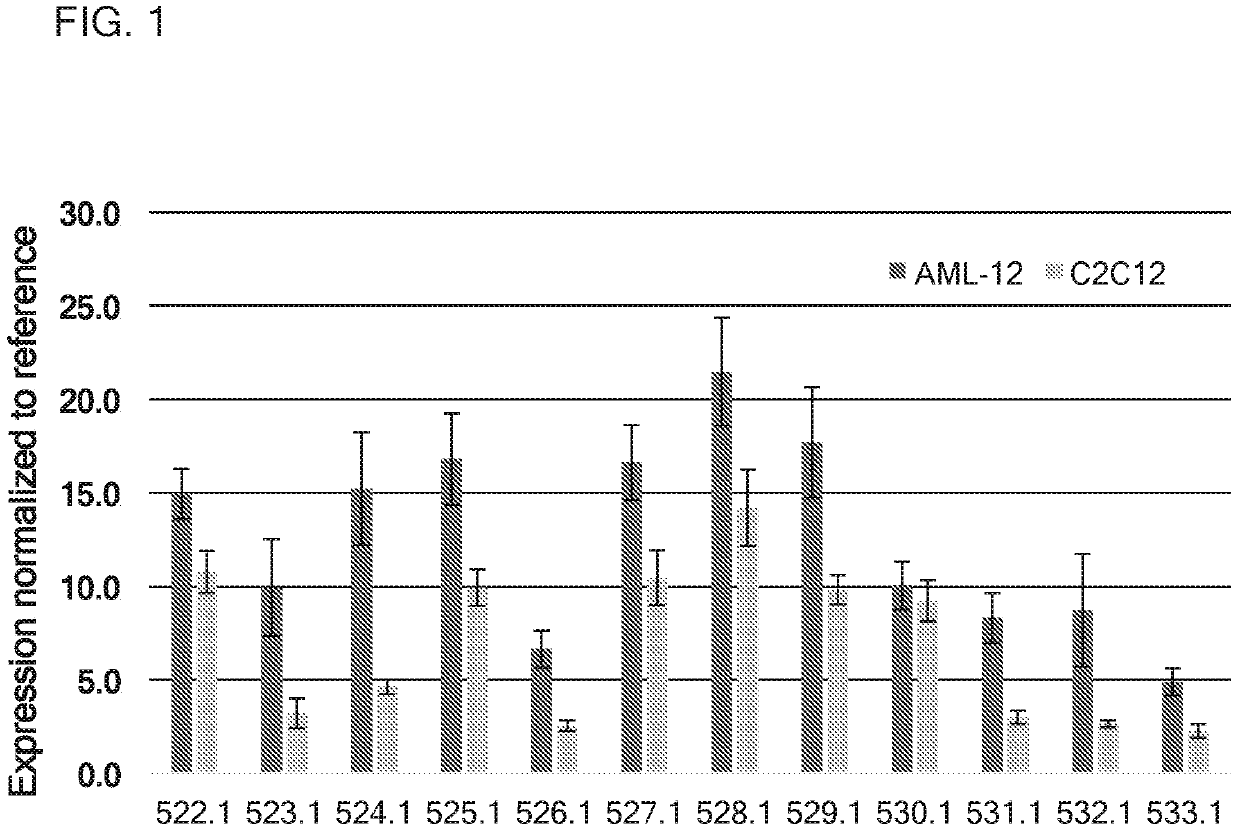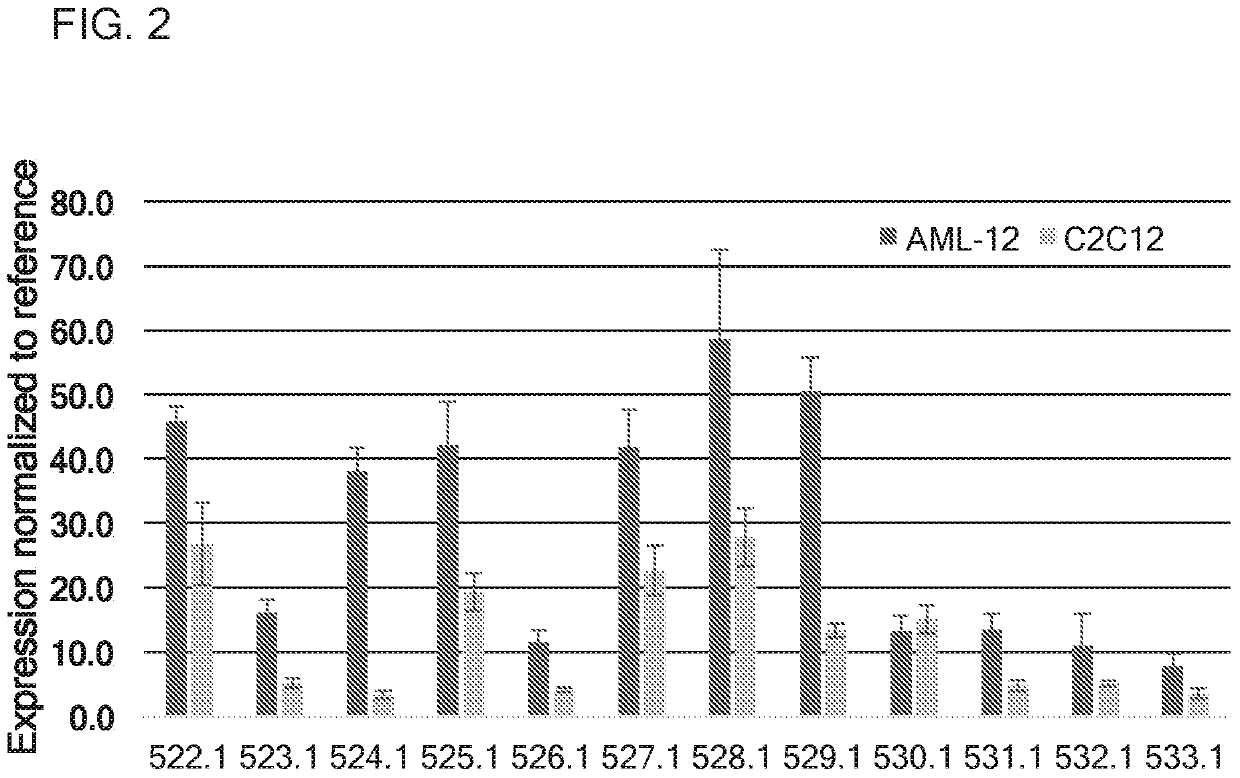Therapeutics for glycogen storage disease type III
a glycogen storage disease and therapy technology, applied in the direction of peptide/protein ingredients, peptide/protein components, transferases, etc., can solve the problems of inability to effectively treat gsd iii, no long-term data demonstrating that high protein diet prevents or treats progressive myopathy, and no enzyme replacement has been explored
- Summary
- Abstract
- Description
- Claims
- Application Information
AI Technical Summary
Benefits of technology
Problems solved by technology
Method used
Image
Examples
example 1
Translatable Molecule 534
[0323]In this example, a reference translatable molecule 534 was made and used for expressing human WT amylo-alpha-1, 6-glucosidase, 4-alpha-glucanotransferase (AGL). The translatable molecule comprised a 5′ cap (7mGpppG), a 5′ UTR of TEV, a Kozak sequence, a WT AGL CDS (SEQ ID NO: 1), a 3′UTR of Xenopus beta-globin, and a Poly(A) tail region consisting of 114 As (i.e., “Poly(A) 114 tail region”). The reference translatable molecule further comprised the sequence of SEQ ID NO: 40 immediately downstream of the AGL CDS. This reference translatable molecule was synthesized with N1-methylpseudouridine in place of uridine.
[0324]Details of the structure of this reference translatable molecule are as follows: Tobacco Etch Virus (TEV) 5′ UTR of SEQ ID NO: 3, a Kozak Sequence of SEQ ID NO: 4, a Xenopus beta-globin (XBG) 3′ UTR of SEQ ID NO: 5, and a Poly(A) 114 Tail of SEQ ID NO: 6.
[0325]Translatable molecules in the examples below can be synthesized with the 5′ cap ...
example 2
ble Molecules Encoding AGL
[0326]In this example, translatable molecules 522-533, 546, 730-740, and 1783-1784 were made and used for expressing human amylo-alpha-1, 6-glucosidase, 4-alpha-glucanotransferase (AGL) with advantageously increased efficiency of translation. These translatable molecules expressing human amylo-alpha-1, 6-glucosidase, 4-alpha-glucanotransferase (AGL) exhibited activity suitable for use in methods for ameliorating or treating GSD III. These translatable molecules comprised a 5′ cap (7mGpppG), a 5′ UTR of TEV, a Kozak sequence, an AGL CDS, and a 3′UTR of Xenopus beta-globin. Translatable molecules 522-533, 546, and 1783-1784 further comprise a Poly(A) 114 tail region. Translatable molecule 730 further comprises a Poly(A) 100 tail region, while translatable molecules 731-740 further comprise a Poly(A) 110 tail region. Translatable molecules 522-533, 546, 730-740, and 1783-1784 further comprise the sequence of SEQ ID NO: 40 immediately downstream of the AGL CDS....
example 4
ssion in Human Primary Hepatocytes
[0332]In this example, human primary hepatocytes were transfected with codon-optimized mRNA molecules 546, 1783, and 1784. AGL protein expression was measured by In-Cell Western™ at 6, 24, 48, and 72 hours post-transfection. The expression of the mRNA sequences as compared with an untreated control (“unt”) is shown in FIG. 5.
PUM
| Property | Measurement | Unit |
|---|---|---|
| molecular mass | aaaaa | aaaaa |
| size | aaaaa | aaaaa |
| pH | aaaaa | aaaaa |
Abstract
Description
Claims
Application Information
 Login to View More
Login to View More - R&D
- Intellectual Property
- Life Sciences
- Materials
- Tech Scout
- Unparalleled Data Quality
- Higher Quality Content
- 60% Fewer Hallucinations
Browse by: Latest US Patents, China's latest patents, Technical Efficacy Thesaurus, Application Domain, Technology Topic, Popular Technical Reports.
© 2025 PatSnap. All rights reserved.Legal|Privacy policy|Modern Slavery Act Transparency Statement|Sitemap|About US| Contact US: help@patsnap.com



